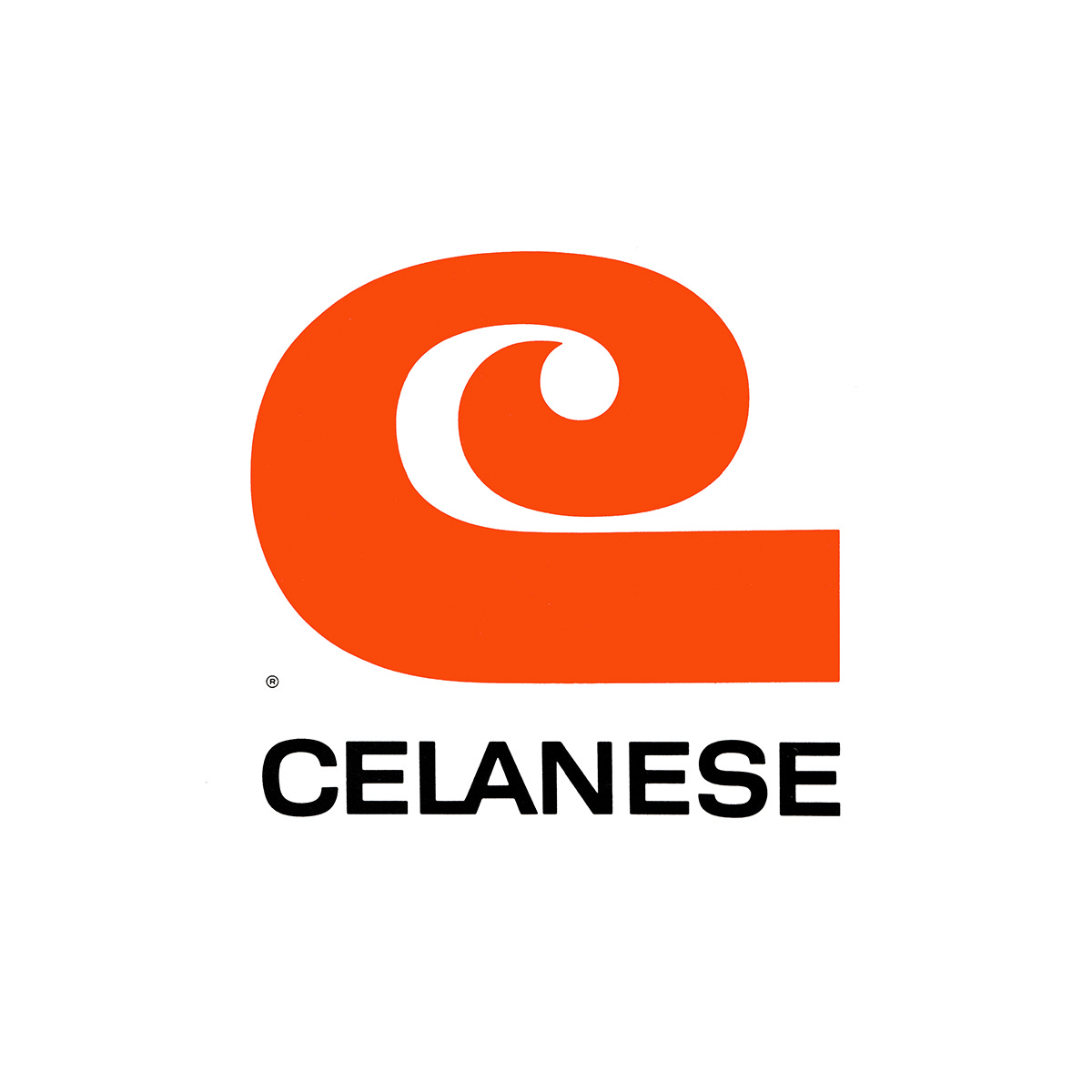A dramatised unity
Saul Bass and Associates' 1965 logo for industrial manufacturer Celanese.
This post is supported by LogoArchive – The home of historical logos. Discover over 5000 of history’s greatest designs from the world’s finest designers. Updated every single day. Always find the logo inspiration you need for your next logo or branding project. Start here.
The American Cellulose & Chemical company was founded in Delaware, USA in 1918, changing its name to Celanese Corporation of America in 1927, and again in 1966 to Celanese.
By the middle of the 1960s Celanese had evolved from a domestic company that specialised in the manufacturing of acetate fibres to a diversified billion-dollar and world-wide producer of man-made fibres, chemicals and cosmetics, lubricants, pesticides, pharmaceuticals, plastics and paints.
Despite a global strategy for ‘integrating forward into consumer fields and backward into raw materials’ the corporation’s growth and diversification had produced an incoherent corporate image. Further, the old ‘free-script’ signatures used since the 1920s were seen as no longer relevant. These lacked strong recognition, did not reflect the ‘characteristics of a large company’. and were considered inappropriate as unifying symbols for the wide variety of companies, affiliates, subsidiaries and brands that made up the Celanese corporation.
The growth of Celanese had been achieved through a strong sense of unity fostered across all subsidiaries. To ‘dramatise’ this unity, Celanese sought a new corporate identity that would ‘correct’ the image of the corporation, bringing it up to date, and graphically unify its divisions and affiliates, which were spread across five continents. This project, substantial in size and complexity, would be led by Saul Bass and Associates who had previously completed work with large corporate entities such as Lawry’s and ALCOA.



